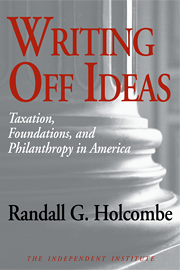In 1996, Pleasanton, California, imposed a cap of 29,000 housing units in the city. The cap was reaffirmed by the voters in 2008. At the time, Pleasanton had about 21,000 units and now has more than 27,000, so it is bumping up against the cap.
On March 12, Alameda County Judge Frank Roesch ruled that Pleasanton’s housing cap violates a state law that requires cities to accommodate their share of regional housing needs. Some evidence that Pleasanton was not doing this is that 40,000 workers commute into Pleasanton every day.
Roesch ordered the city to remove regulatory barriers and rezone land for housing construction to allow 4,000 new housing units by 2014, and further required three-quarters of them to be affordable to low and middle income Californians.
The decision is a victory for Californians who want affordable housing, but is at best a partial victory for the protection of property rights. Pleasanton’s housing ban compromised the property rights of landowners by limiting development options, lowering the value of their property without compensation. It prevented some landowners from using their property in the exact same way as their neighbors were using theirs. The cap was a regulatory taking.
The decision will increase the value of the property that is rezoned for development, but because the decision was made to conform with another California law, the ruling does not affirm the right of property owners to use their property as their neighbors do. The ban, supported again by the voters in 2008, essentially said, “We have our houses here, and we don’t want other people to be able to use their property the way we are using ours.” A better decision would have nixed the cap on housing units as a protection of property rights, rather than to enforce compliance with a state regulation on housing needs.
The elimination of the cap will have the effect of making housing in Pleasanton more available, and more affordable, but not for the obvious reason that Judge Roesch ordered most of the housing to be affordable. Housing prices are determined by the laws of supply and demand, not by court order. Removing the cap will allow an increase in the supply of housing, which will keep prices lower than they would have been without the cap.
Even after the housing bubble burst, housing is more expensive in California than in most other states. Why does housing cost more in California than in Texas? Because the supply is more limited relative to demand in California than in Texas, and much of that is due to California’s excessively restrictive land use regulations. Removing regulations like the Pleasanton cap will make California housing more affordable because it will increase the supply of housing.
Judge Roesch made the right decision, but for the wrong reason. The Pleasanton cap should be removed because it violates property rights and constitutes a regulatory taking. The decision will increase the supply of housing, which will mitigate upward pressure on housing prices. It is a good decision for California, even though it may prove unpopular with people who, once they live in Pleasanton, want to keep others out.













